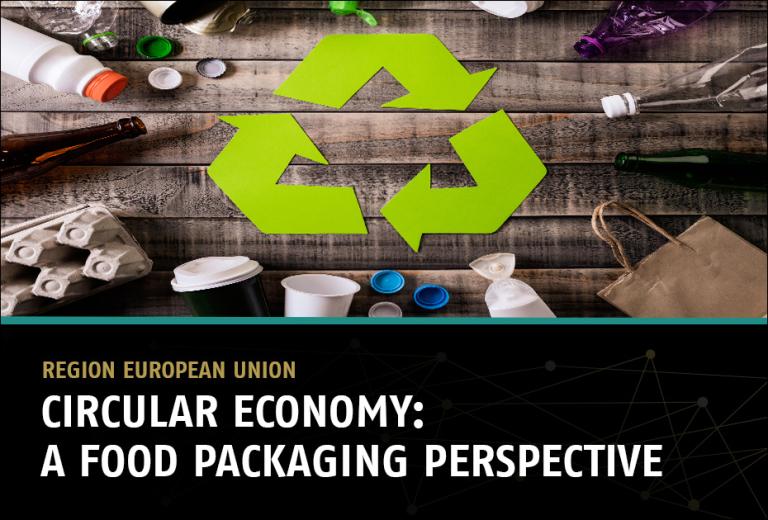Circular Economy: A Food Packaging Perspective
The process of a Circular Economy is a change to the model in which resources are mined, made into products, and then become waste. A circular economy reduces material use, redesigns materials, products, and services to be less resource intensive, and recaptures “waste” as a resource to manufacture new materials and products.1
The European Union is introducing new guidelines for waste reduction. Waste related to food packaging has a big impact on the environment, so multiple efforts are underway to introduce an efficient, green way of food packaging waste management.
The European Commission (EC) has provided detailed numbers to understand the scale of packaging waste:
- 177 kg of packaging waste generated per person in the world
- 79.3 million tons in total was generated in 2020 in the EU member countries
- Around 40% of plastics and 50% of paper used in the EU is destined for packaging
Packaging waste is a huge part of total waste facing the world. Action is needed by food producers, but also by consumers. The circular economy is a system designed for sustainable and environmentally friendly packaging production based on the reuse and regeneration of materials or products and involves every part of the economy.
Directive 2008/98/EC on waste introduces a legal framework for treating waste in the EU. This framework is intended to protect the environment and human health by emphasizing the importance of proper waste management, as well as recovery and recycling techniques. This Directive is connected with the circular economy, with a basic focus on reducing waste and pollution with repair, reuse, and reduction. This concept is presented by of the Extended Producer Responsibility (EPR) schemes, which shifts the financial and operational responsibility of recycling packaging to the producer of the packaging. Funds received from EPR schemes are used to educate consumers on recycling as well as improve recycling infrastructure.
One target2 is for all packaging to be recyclable in an economically viable way by 2030. Regulation (EU) 2022/1616 on recycled plastic materials is connected to this goal and establishes a Union register of technologies, recyclers, recycling processes, recycling schemes. This regulation aims to increase the use of recycled plastic material in food contact materials while ensuring the safety of recycled plastic. Additional targets set by the European Commission include at least 65% of all packaging waste being recycled by the end of 2025 and at least 70% by the end of 2030. These numbers require that producers and consumers enact change as it relates to their approach to recycling and recyclability in a variety of industries.
There are additional EC regulations that relate to the Circular Economy concept some of which are still in the proposal stage. Among these is the regulation on packaging and packaging waste, amending Regulation (EU) 2019/1020 and Directive (EU) 2019/904, and repealing Directive 94/62/EC.3 This regulation is intended to provide EU Member States and businesses with adequate support to achieve waste reduction targets. This harmonized regulatory framework, in conjunction with Regulation (EU) 2022/161, is intended to reduce waste and promote high-quality recycling.
The regulatory landscape for those in the packaging industry is rapidly evolving; knoell can assist our clients by informing them of these new regulations as they are updated.
Please contact the knoell FFCM team or visit the FFCM team here.
[2] https://ec.europa.eu/eurostat/web/waste/targets


